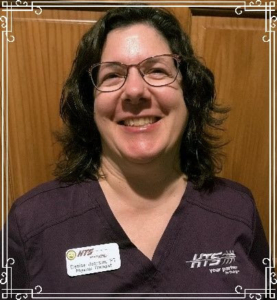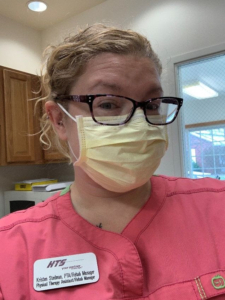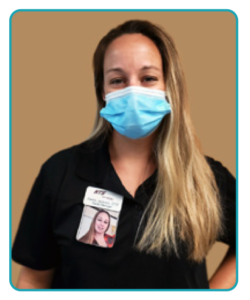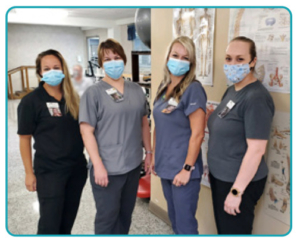Blog by: Jessica Duffy, OTR, Regional Director, Healthcare Therapy Services, Inc.
The word relationship is defined as: “The way in which two or more concepts, objects, or people are connected, or the state of being connected.” I think it is fair to say that COVID has completely changed how many of our interpersonal and working relationships operate now. As we look at this from a higher perspective, however, what has that really changed for us?
When I think of the relationships that are very important in our life, I am acutely aware of the importance of being present. For example, as a mother, it is not an option for me to miss any of my children’s events. I would not be happy with just getting the “rundown” after the big game; I would want to experience it with them first hand! Who wants to hear the exciting tale of making the game point–an hour after it occurred?! Not me. I want to see it and experience it. There is power in being present. This power and concept of being present applies in our professional lives as well. Let’s discuss how we can be present at our workplace.
With all of the new regulatory changes, quarantining, the elimination of group gatherings, etc., it has become all too easy to lose track of some of the systems we have in place to continue relationships in our buildings. We have at times, just given a document or report, in lieu of having our normal meeting because it more readily meets the demands of COVID-19 restrictions. Perhaps in a larger site, we stayed only in the healthcare area to prevent cross-contamination. I’m sure as you read this, ten more scenarios have popped in your mind of how we have changed our operations, but is what we are doing right or even optimal? Is it truly meeting that need of “staying connected”?
As in my parenting example, would you be ok with just getting the report of your child’s big event, or would you somehow finesse the opportunity to be more personally present? If entry is not permitted, is it live-streamed? Can you Zoom, Facetime, etc.? I have done it all, by the way, this past year. As a proud sports mama, I have watched live-streamed sporting events through the school and Zoomed my children’s teammates or coaches who could be at the event so that I can experience it firsthand while working in the red zone.
When it comes to our clients and our daily operations, HTS Therapy chooses to be PRESENT. Instead of assuming it is ok to substitute a connection, such as the morning meeting, a clinical or Medicare meeting by simply passing out forms, we want to finesse that personal interaction. If an in-person meeting is not an option, then we will leverage a virtual meeting or conference call. Our team believes best practices happen through an interdisciplinary team collaboration.
HTS Therapy chooses to be present.
Need a Powerful Therapy Partner? Contact Amanda Green, Executive Director of Strategic Development am****@********py.com for information about our contract therapy partnerships.

Jessica Duffy, OTR
Regional Director | Healthcare Therapy Services, Inc.





